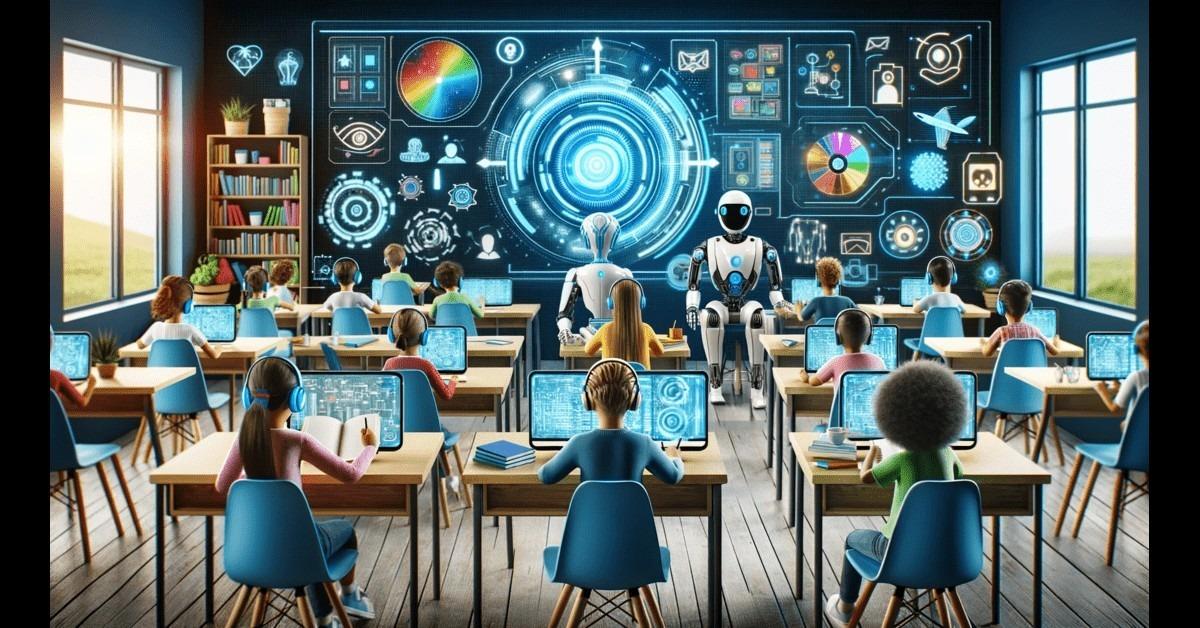How AI Is Revolutionizing Personalized Education Worldwide: Global Trends and Impact
Artificial Intelligence (AI) is reshaping the way we learn and teach, driving a seismic shift in personalized education worldwide. From advanced adaptive learning platforms to bright tutoring systems, AI-powered education is creating new opportunities for students, educators, and institutions.In this in-depth article, we’ll explore how AI is revolutionizing personalized education, highlight global trends, and unpack the transformative impact of artificial intelligence in classrooms everywhere.
Understanding Personalized Education and AI
Personalized education tailors learning experiences to individual students’ needs, preferences, and pace. With the advent of AI in education, this concept has evolved into highly sophisticated adaptive learning models.
- Adaptive Learning Algorithms: AI uses data to analyze each student’s strengths and weaknesses, delivering customized resources and exercises.
- Intelligent Tutoring Systems: AI-driven tutors provide instant feedback and guidance, much like a one-on-one human tutor.
- Smart Assessment Tools: AI automatically evaluates student performance, adapting the curriculum in real time.
Global Trends in AI-powered Education
AI’s penetration in education is a global phenomenon, with innovative trends emerging across continents. Key trends include:
1. Expansion of Adaptive Learning Platforms
EdTech companies worldwide are developing AI-powered platforms that adapt content to suit individual learning paths. Companies like Duolingo, Coursera, and BYJU’S leverage AI to personalize lessons, improving learner engagement and outcomes.
2. AI-Assisted Language Learning
Tools such as Google Translate and Babbel use AI to tailor language instruction, adjusting to user progress and feedback.
3. International Collaboration and Policy Initiatives
Countries are collaborating to integrate AI into education policy.Initiatives like UNESCO’s AI in education Policy Guidelines and China’s Next Generation AI Plan illustrate global movement toward standardized,ethical AI in learning.
4. AI for Remote and Inclusive Learning
AI-powered education makes personalized learning accessible to students in remote or underserved areas through cloud-based solutions, breaking down geographical and socioeconomic barriers.
Main Benefits of AI in Personalized Education
- Enhanced Student Engagement: AI keeps learners motivated by delivering content tailored to thier interests and progress.
- Efficient Identification of Learning Gaps: AI analytics detect when a student struggles, offering targeted interventions early.
- Scalable Personalized Support: AI can serve millions of students simultaneously, something unfeasible for conventional classroom models.
- Support for diverse Learning styles: Visual, auditory, and kinesthetic learners all benefit from multi-modal AI instruction.
- Time Savings for Educators: Teachers can focus more on creative and critical thinking activities as AI handles routine grading and content delivery.
- 24/7 Learning Opportunities: AI-driven chatbots and learning platforms are always accessible, supporting continuous learning outside conventional hours.
Real-World Case Studies: AI Transforming Education
Case studies from different countries showcase the real-world impact of AI-powered personalized learning:
Case Study 1: India – BYJU’S
India’s leading EdTech platform, BYJU’S, employs AI algorithms to deliver personalized video lessons and quizzes. Their AI-driven platform continuously adjusts content based on each student’s pace and comprehension levels, helping over 100 million learners access customized instruction at scale.
Case Study 2: United States – Carnegie Learning
Carnegie Learning’s MATHia platform leverages AI to provide real-time feedback and adaptive math instruction. By analyzing responses, it guides students through complex concepts with tailored hints, leading to increased mastery and reduced learning anxiety.
Case Study 3: China – Squirrel AI Learning
Squirrel AI, a pioneering Chinese EdTech firm, utilizes AI to analyze student behavior, adjust lesson flow, and create hyper-personalized paths. The result: dramatic improvements in test scores and educational equity for learners in urban and rural China alike.
challenges and Considerations
Despite its promise, AI in personalized education faces several hurdles:
- Data Privacy Concerns: The use of sensitive student details demands robust security and ethical standards.
- Bias in AI Algorithms: Educators and developers must guard against algorithmic bias that can perpetuate inequalities.
- Digital Divide: Not all students have equal access to digital devices and high-speed internet.
- Training for Teachers: Effective integration of AI requires educators to be trained in new tools and pedagogical methods.
Addressing these issues is critical to ensuring that AI-powered personalized education fulfills its potential for all learners globally.
Practical Tips for Implementing AI in Education
- Start Small: Pilot AI-powered tools in single classrooms or subjects before institution-wide adoption.
- Choose Trusted AI Solutions: Select platforms with proven track records, clear data usage policies, and user-centric design.
- Invest in Teacher Training: Provide professional development workshops focused on using and integrating AI into lesson plans.
- Monitor and Evaluate outcomes: Continuously assess AI’s effectiveness and make adjustments based on student feedback and performance data.
- Prioritize Equity and Accessibility: Choose AI solutions that cater to diverse linguistic, cognitive, and physical needs.
first-Hand Experience: What Educators and Students Say
“Using AI tools has transformed my teaching. I can spend more time fostering discussion and creativity, while AI tailors lessons for each student. The immediate feedback helps struggling learners improve faster.”
– Maria Garcia, High School Teacher, Spain
“My AI learning app adapts the questions to my level and lets me learn at my own pace. It’s helped me become more confident in subjects I used to struggle with.”
– Lina Wang, middle School Student, China
The Future of AI in Personalized Education
AI will continue to drive profound changes in education, with experts predicting:
- increased integration of virtual and augmented reality for immersive, personalized experiences
- Growth in AI-powered assessment tools that measure critical thinking and creativity, not just rote skills
- Advancements in natural language processing (NLP) for better communication and feedback
- AI-powered education contributing to United Nations Sustainable Development Goal 4: Quality Education for All
The evolution of personalized education through AI holds great promise for making learning more engaging, equitable, and effective worldwide.

